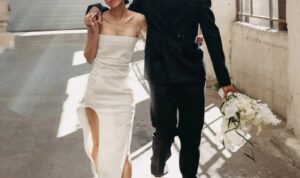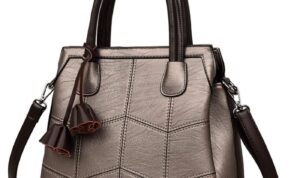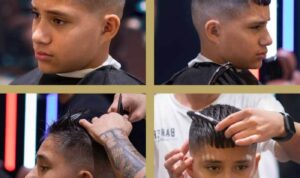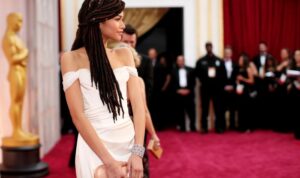Vintage clothing styles take us on a nostalgic journey through the fashion evolution of different eras, from the roaring 20s to the neon-lit 80s. Get ready to explore the iconic pieces, materials, textures, and styling tips that define this timeless fashion trend.
Historical Evolution
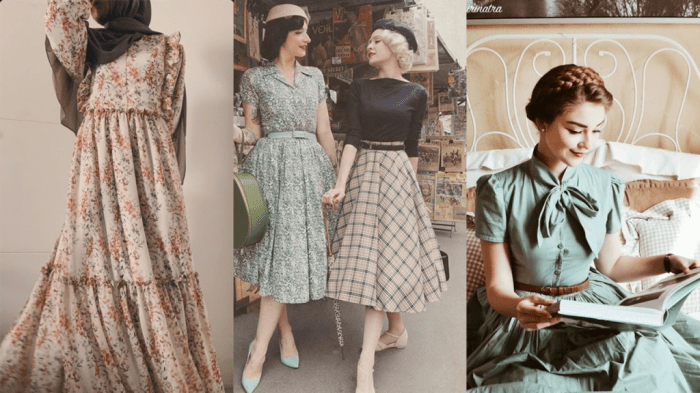
Vintage clothing styles have a rich history that dates back to the early 20th century. The origins of vintage fashion can be traced back to the 1920s when flapper dresses and cloche hats were all the rage. This era was characterized by loose-fitting garments with dropped waists, reflecting the changing social norms and attitudes of the time.
As time progressed, vintage clothing evolved through the decades, each era bringing its own unique styles and trends. The 1950s saw the rise of full skirts, cinched waists, and the iconic poodle skirts. This post-war period was marked by a return to more feminine silhouettes and a renewed sense of glamour.
Moving into the 1980s, vintage fashion took on a bold and eclectic look with power suits, oversized blazers, and neon colors dominating the scene. This era was all about excess and self-expression, with a mix of punk, new wave, and preppy styles coming together to create a truly diverse fashion landscape.
Comparing Vintage Clothing from Different Eras
- The 1920s: Known for its flapper dresses and drop-waist silhouettes, the 1920s exuded a sense of rebellion and freedom in fashion. Women embraced shorter hemlines, looser fits, and more relaxed styles in response to the changing social dynamics of the time.
- The 1950s: This era was characterized by a return to more traditional and conservative styles, with full skirts, fitted bodices, and cinched waists defining the fashion of the time. The 1950s embraced a more polished and ladylike aesthetic, drawing inspiration from the glamour of Hollywood stars.
- The 1980s: In stark contrast to the previous eras, the 1980s was all about bold colors, oversized silhouettes, and a mix of eclectic styles. Power dressing became the norm, with padded shoulders, bright neons, and statement accessories taking center stage.
Popular Vintage Pieces
Vintage fashion has seen a resurgence in recent years, with many iconic pieces making a comeback in modern wardrobes. These pieces not only have a unique charm but also hold historical significance in the world of fashion.
Poodle Skirts
Poodle skirts are a quintessential piece of 1950s fashion. Characterized by a full circle skirt with a poodle appliqué, these skirts were often paired with a snug sweater or button-down shirt. Poodle skirts exude a sense of fun and whimsy, capturing the essence of the carefree ’50s era.
Flapper Dresses
Flapper dresses gained popularity in the 1920s during the Roaring Twenties era. These dresses were known for their loose, shapeless silhouette, embellishments like fringe and sequins, and shorter hemlines that allowed for easier movement and dancing. Flapper dresses symbolized the newfound freedom and rebellious spirit of women in the 1920s.
Bell-Bottom Pants
Bell-bottom pants were a staple of 1960s and 1970s fashion. These pants featured a fitted waist and thigh with a dramatic flare at the bottom, creating a bell-like shape. Bell-bottoms were often worn with platform shoes and were synonymous with the hippie counterculture movement of the era.
These popular vintage pieces have had a significant influence on modern fashion trends. Designers often draw inspiration from these iconic styles, incorporating elements such as poodle skirts’ full skirts, flapper dresses’ embellishments, and bell-bottom pants’ flared bottoms into their collections. Vintage pieces add a touch of nostalgia and retro flair to contemporary fashion, proving that timeless styles never truly go out of fashion.
Materials and Textures
Vintage clothing encompasses a wide range of materials and textures that have evolved over time to define the unique styles of each era. The choice of fabrics and textures played a crucial role in shaping the overall look and feel of vintage fashion.
Fabrics commonly used in vintage clothing
- Silk: Silk was a popular choice for luxurious vintage pieces, adding a touch of elegance and sophistication to outfits.
- Wool: Wool was commonly used in vintage clothing for its warmth and durability, especially in outerwear like coats and jackets.
- Cotton: Cotton was a versatile fabric used in vintage clothing for its breathability and comfort, making it suitable for a wide range of garments.
- Linen: Linen was favored for its lightweight and breathable properties, often seen in vintage summer dresses and blouses.
Textures popular in different eras, Vintage clothing styles
- Lace: Lace textures were prominent in vintage clothing, adding a delicate and feminine touch to garments, particularly in the Victorian and Edwardian eras.
- Velvet: Velvet textures were associated with luxury and glamour, commonly seen in vintage evening gowns and accessories during the 1920s and 1930s.
- Seersucker: Seersucker textures became popular in the 1940s and 1950s, known for their puckered appearance and lightweight feel, ideal for summer garments.
Contribution of materials to vintage clothing style
The choice of materials in vintage clothing not only influenced the look and feel of garments but also reflected the social and economic contexts of different eras. Luxurious fabrics like silk and velvet were associated with wealth and status, while more practical fabrics like wool and cotton were favored during times of war or economic hardship. The textures used in vintage clothing added depth and visual interest to outfits, creating a unique aesthetic that continues to inspire contemporary fashion.
Styling Tips: Vintage Clothing Styles

When incorporating vintage pieces into modern outfits, it’s important to find a balance between old and new styles. Mixing and matching vintage clothing with contemporary items can create a unique and personalized look. Accessories play a key role in complementing vintage styles and adding an extra touch of flair to the outfit.
Mixing Vintage with Modern
To seamlessly blend vintage pieces with modern clothing, start by selecting one standout vintage item as the focal point of your outfit. This could be a vintage dress, jacket, or pair of pants. Then, pair it with more modern pieces in neutral colors to let the vintage item shine. For example, try wearing a vintage floral blouse with a pair of high-waisted jeans and sneakers for a casual yet stylish look.
Accessorizing Vintage Outfits
Accessories can elevate a vintage outfit and tie the whole look together. Opt for retro-inspired accessories like cat-eye sunglasses, vintage scarves, or a statement belt to enhance the vintage vibe. Mixing in contemporary jewelry pieces like layered necklaces or stackable rings can add a modern twist to your vintage ensemble. Don’t be afraid to experiment with different combinations to find what works best for you.
